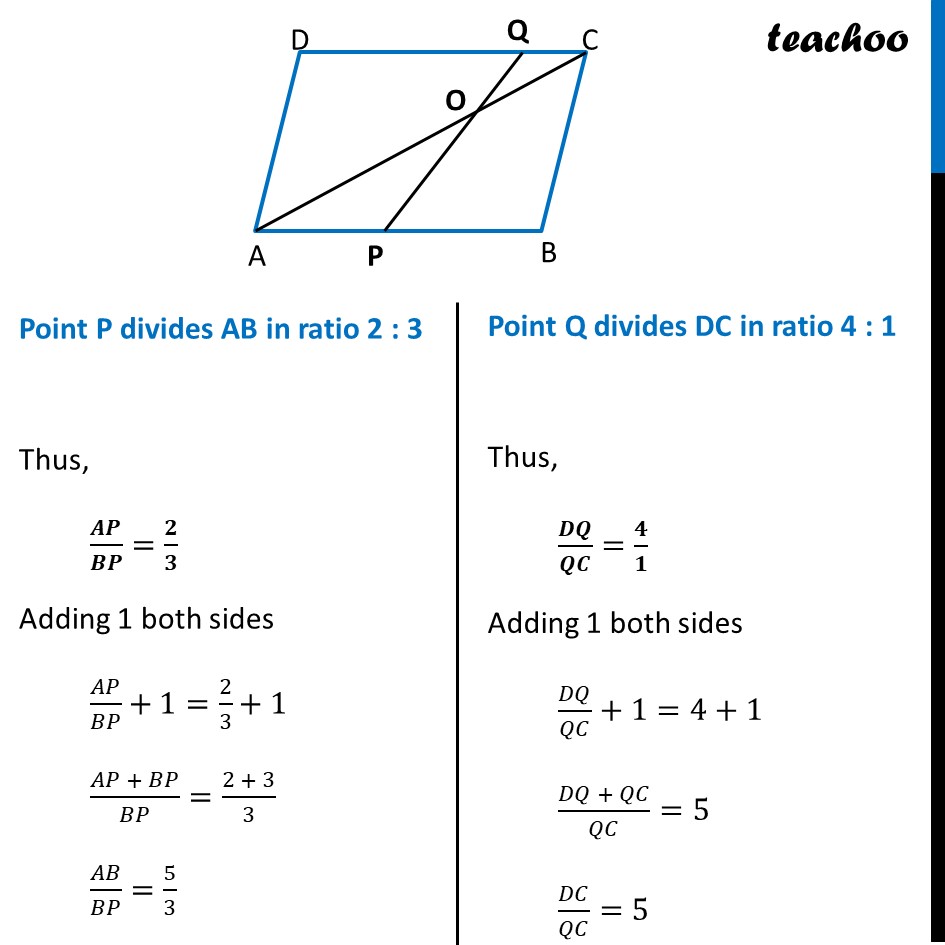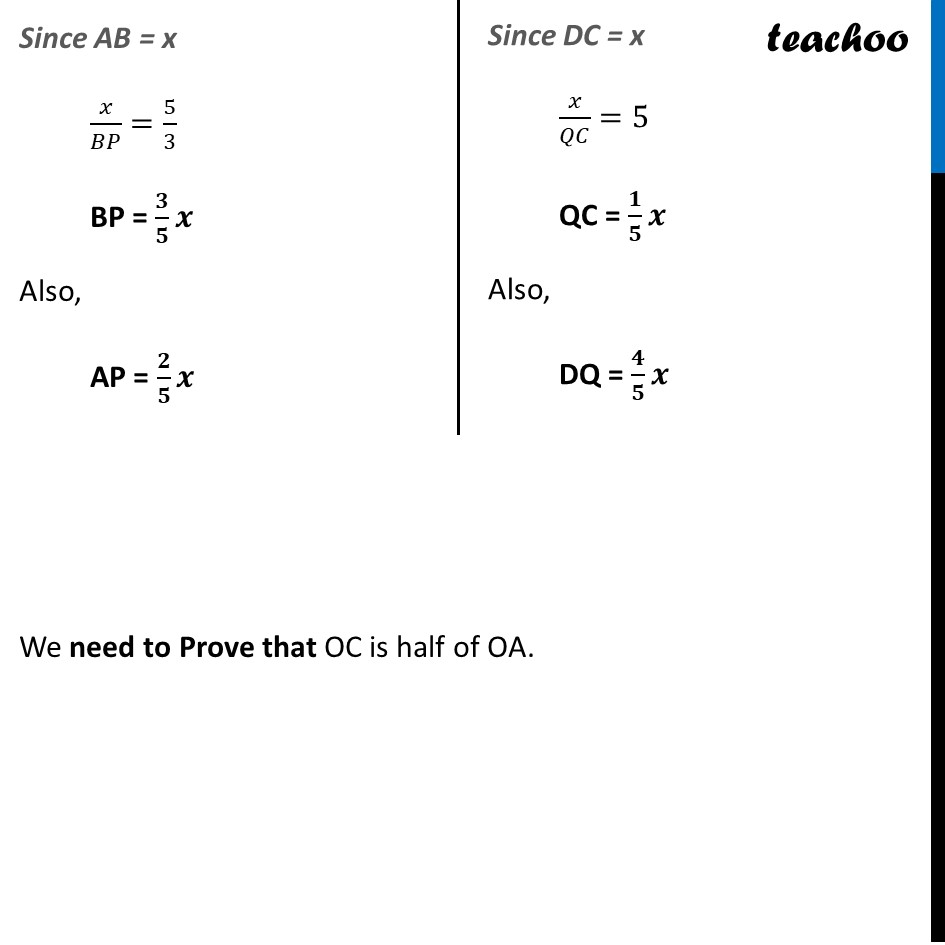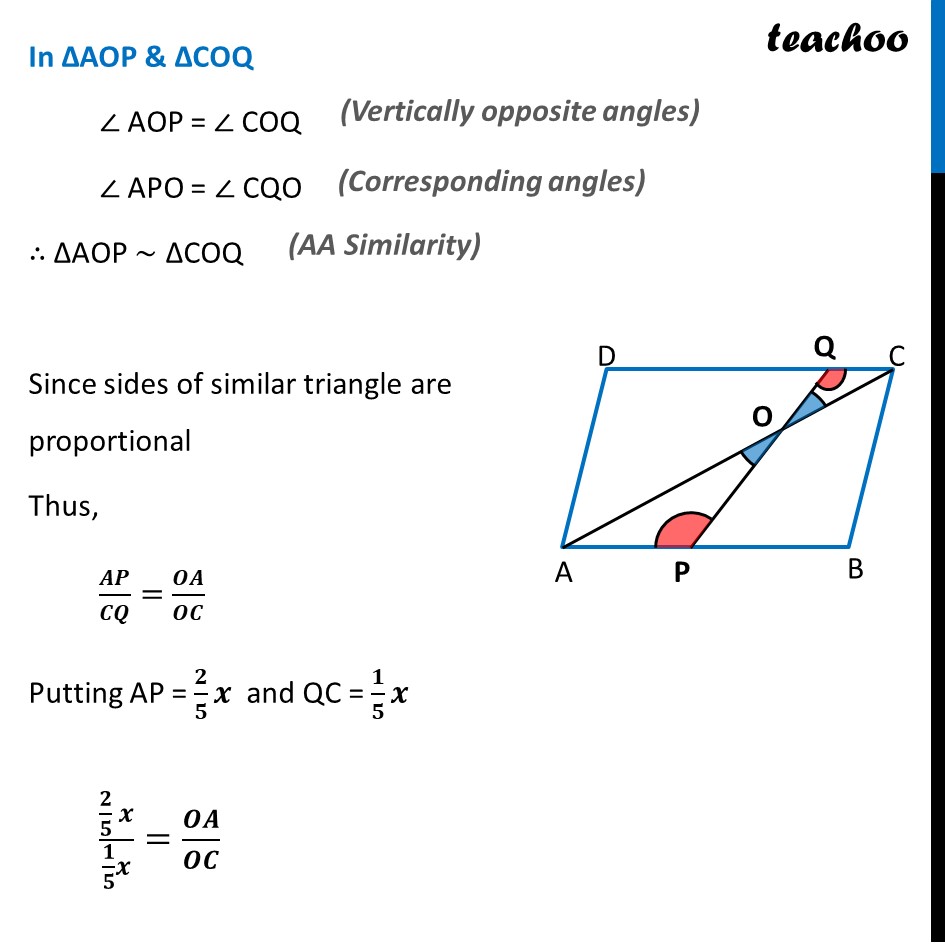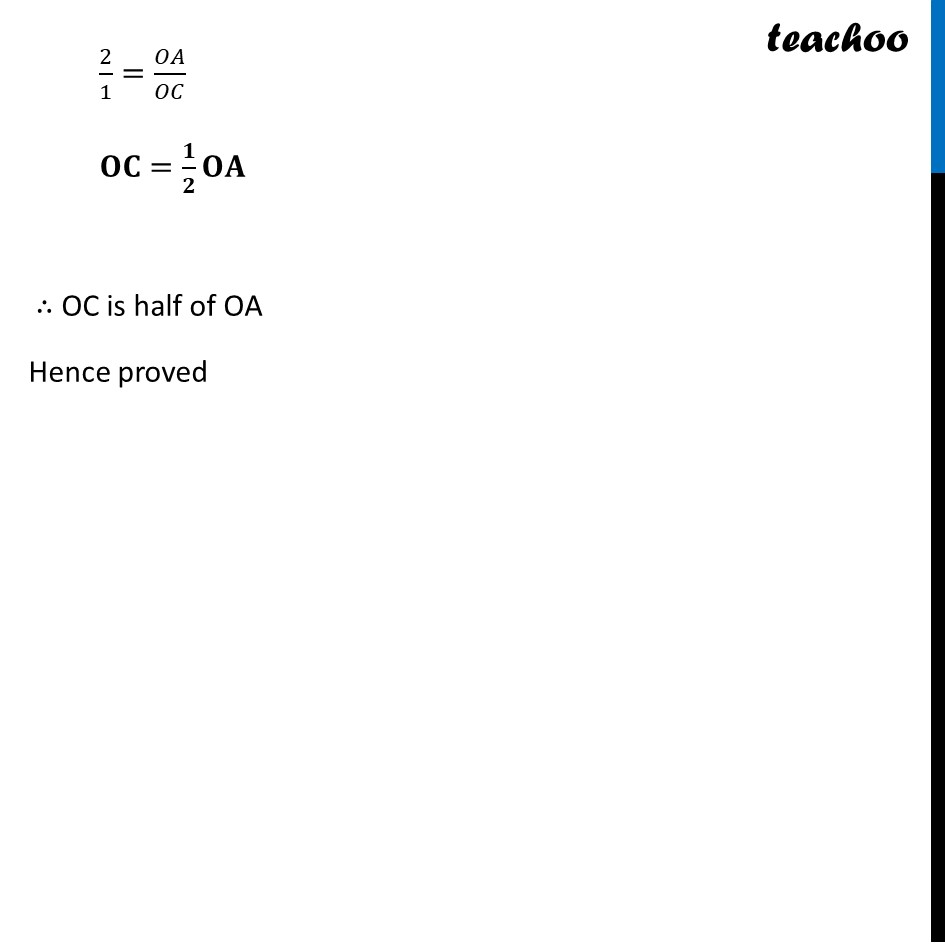ABCD is a parallelogram. Point P divides AB in the ratio 2:3 and point Q divides DC in the ratio 4:1. Prove that OC is half of OA
![[SQP] ABCD is a parallelogram. Point P divides AB in the ratio 2:3 - CBSE Class 10 Sample Paper for 2024 Boards - Maths Standard](https://cdn.teachoo.com/8ff4b44f-e853-4ffe-b897-3812da2eb7d3/slide50.jpg)




CBSE Class 10 Sample Paper for 2024 Boards - Maths Standard
CBSE Class 10 Sample Paper for 2024 Boards - Maths Standard
Last updated at Feb. 13, 2025 by Teachoo
![[SQP] ABCD is a parallelogram. Point P divides AB in the ratio 2:3 - CBSE Class 10 Sample Paper for 2024 Boards - Maths Standard](https://cdn.teachoo.com/8ff4b44f-e853-4ffe-b897-3812da2eb7d3/slide50.jpg)




Transcript
Since opposite sides of parallelogram are equal AB = CD Let AB = CD = x Point P divides AB in ratio 2 : 3 Thus, 𝑨𝑷/𝑩𝑷=𝟐/𝟑 Adding 1 both sides 𝐴𝑃/𝐵𝑃+1=2/3+1 (𝐴𝑃 + 𝐵𝑃)/𝐵𝑃=(2 + 3)/3 𝐴𝐵/𝐵𝑃=5/3 Since AB = x 𝑥/𝐵𝑃=5/3 BP = 𝟑/𝟓 𝒙 Also, AP = 𝟐/𝟓 𝒙 Point P divides AB in ratio 2 : 3 Thus, 𝑨𝑷/𝑩𝑷=𝟐/𝟑 Adding 1 both sides 𝐴𝑃/𝐵𝑃+1=2/3+1 (𝐴𝑃 + 𝐵𝑃)/𝐵𝑃=(2 + 3)/3 𝐴𝐵/𝐵𝑃=5/3Point Q divides DC in ratio 4 : 1 Thus, 𝑫𝑸/𝑸𝑪=𝟒/𝟏 Adding 1 both sides 𝐷𝑄/𝑄𝐶+1=4+1 (𝐷𝑄 + 𝑄𝐶)/𝑄𝐶=5 𝐷𝐶/𝑄𝐶=5 In ΔAOP & ΔCOQ ∠ AOP = ∠ COQ ∠ APO = ∠ CQO ∴ ΔAOP ~ ΔCOQ Since sides of similar triangle are proportional Thus, 𝑨𝑷/𝑪𝑸=𝑶𝑨/𝑶𝑪 Putting AP = 𝟐/𝟓 𝒙 and QC = 𝟏/𝟓 𝒙 (𝟐/𝟓 𝒙)/(𝟏/𝟓 𝒙)=𝑶𝑨/𝑶𝑪 2/1=𝑂𝐴/𝑂𝐶 𝐎𝐂=𝟏/𝟐 𝐎𝐀 ∴ OC is half of OA Hence proved